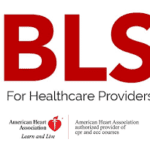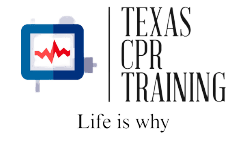
BLS vs. CPR – What’s the Difference?
Is there any difference between BLS and CPR?
Yes, there is! Generally, people confuse the two terms Basic Life Support (BLS) and Cardiopulmonary Resuscitation (CPR) by considering them the same thing. However, despite many similarities, both the terms differ from each other in various ways. The confusion between the two terms can get very serious when people apply for jobs in healthcare departments where they might be asked to bring a specified certificate, either CPR certificate or BLS certificate. Both the certifications are imperative for healthcare individuals but the importance of each one of them in someone’s life and occupation is actually according to their job roles.
What is the Major Difference between BLS and CPR?
The major difference between the two is the outline of the training programs. Just like any particular degree or diploma a course would have a specified course outline where the students study their core subjects and opt for electives according to their field of interest; similarly CPR and BLS have their own specified domains of specialization.
Basic Life Support (BLS) Certification Course is considered a slightly advanced one with greater complexity compared to Cardiopulmonary Resuscitation (CPR) training course. Hence, many health care fields would probably choose BLS as a prerequisite certificate. BLS is advanced in a way that it comprises of CPR training as one of it essential courses. If one opts for BLS, they are taught CPR in detail.
What is BLS?
American Heart Association (AHA) has especially designed the Basic Life Support (BLS) training course for healthcare professionals. BLS is an all-in-one course which covers important skills that a health care provider must have. The training course includes:
- Efficient use of an AED, Automatic External Defibrillator
- CPR for adults, children, and infants
- How to proceed with Rescue breathing effectively
- Adequate usage of bag-mask for ventilation
- Training related to relief airway obstruction or choking
The entire training session comprises of useful actions that a healthcare provider would need in order to perform their professional role. On the other hand, CPR is a basic course and is sufficient for a layman who is not a medical professional.
What is CPR?
CPR involves three basic steps “call, pump, and blow” that requires additional confidence and skills to carry out which is only possible by attending a proper CPR training course. This helps non-medical individuals to learn basic life-saving skills that can help them in unforeseen circumstances until medical help arrives. A CPR course is essential for teachers and daycare providers, general workplace individuals, and people who have a family history of coronary heart diseases or CPR, so that they are able to take immediate actions during the awful situation. CPR course outline covers the following topics and skills:
This is why, emergency medical technicians, doctors, nurses, lifeguards, and pharmacists are required to obtain a BLS certification rather than a simple CPR course. However, CPR training is very essential and whether you are a healthcare provider or not, you must acquire a CPR training certification.
Take a BLS Class today if you are a healthcare provider at www.texascpr.com
Take a CPR Class today if you are not a healthcare provider at www.texascpr.com
